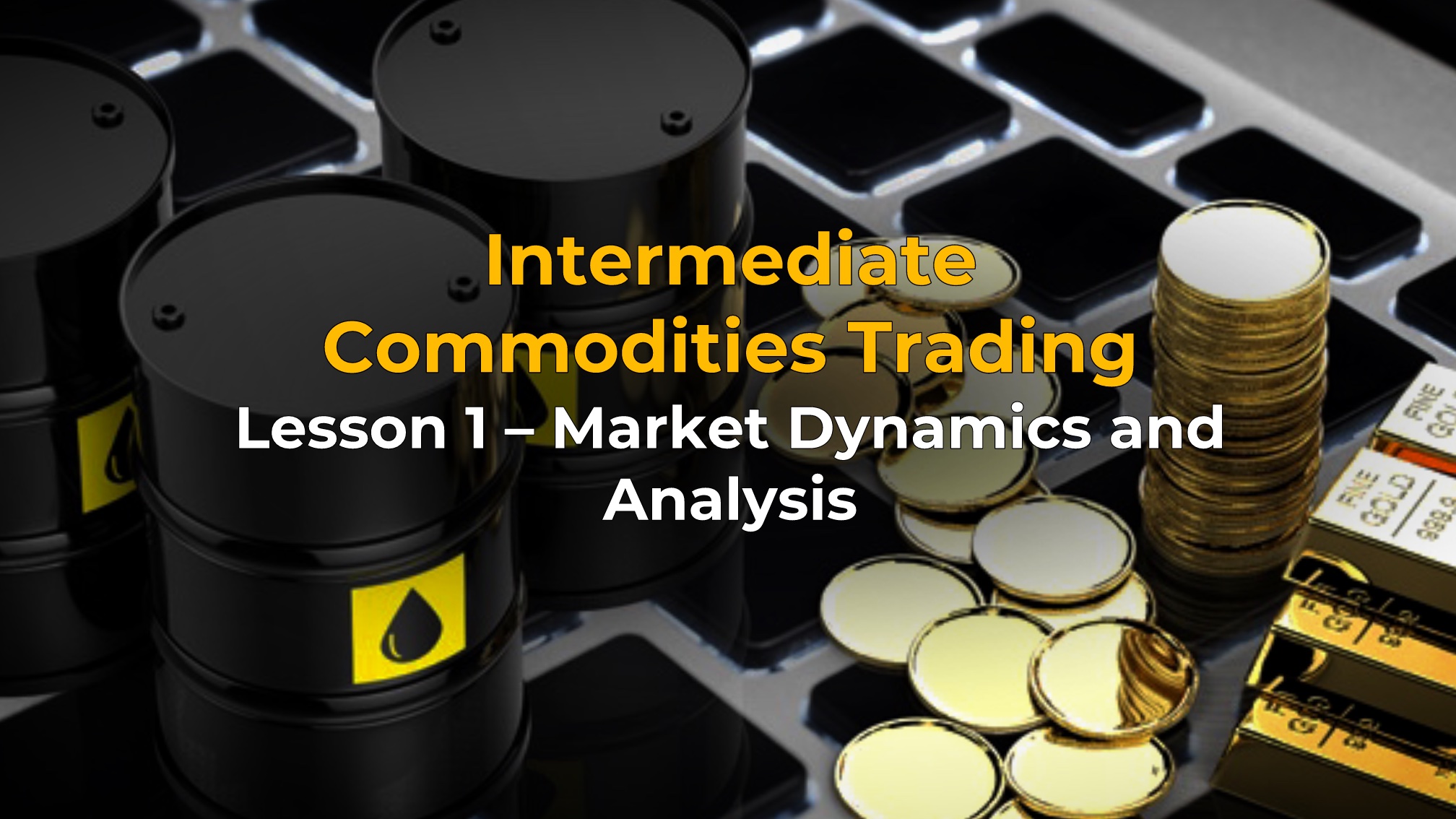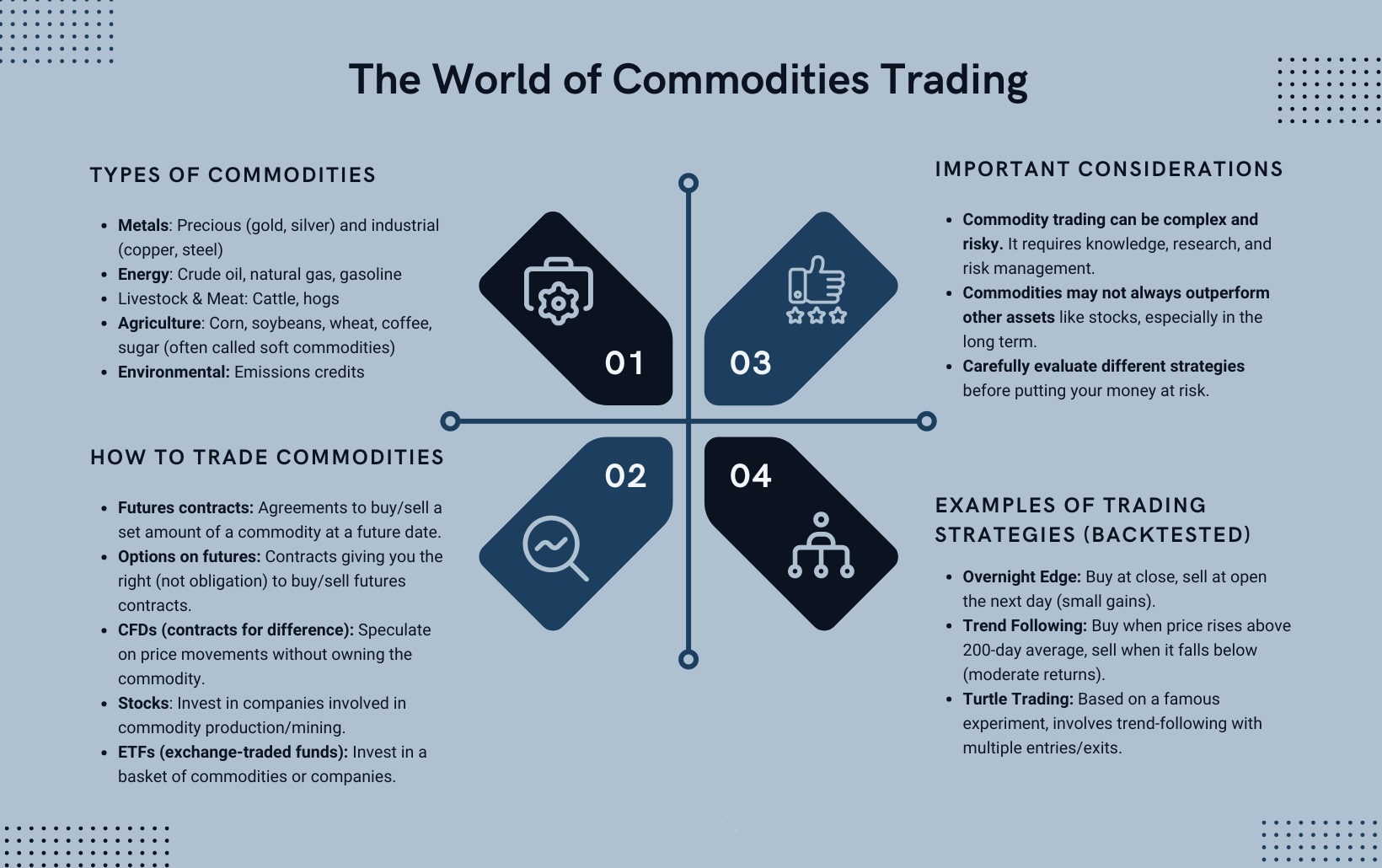
Intermediate Commodities Trading: Lesson 1 — Market Dynamics and Analysis
04 февраля 2024
66 views
Commodity exchanges like the Chicago Mercantile Exchange (CME) and the London Metal Exchange (LME) are central hubs for buying and selling commodities. These exchanges ensure transparency and liquidity in the market.
Understanding Market Structure
- Commodity Exchanges: Major platforms where commodities are traded. Examples include the Chicago Mercantile Exchange (CME) and the London Metal Exchange (LME).
- Function: Provide a centralized marketplace for buying and selling commodities, ensuring transparency and liquidity.
- Market Participants:
- Hedgers: Producers or consumers of commodities who use futures contracts to manage price risk.
- Speculators: Investors who seek to profit from price changes and provide liquidity to the market.
- Arbitrageurs: Traders who exploit price discrepancies between different markets or instruments.
- Types of Contracts:
- Futures Contracts: Standardized contracts traded on exchanges for the delivery of commodities at a future date.
- Options Contracts: Give the right, but not the obligation, to buy or sell a commodity at a specified price before a certain date.

Analyzing Supply and Demand
- Supply Analysis:
- Production Data: Monitor production levels and forecasts to understand supply trends.
- Inventory Levels: High inventory levels can indicate oversupply, while low levels suggest tight supply.
- Demand Analysis:
- Economic Indicators: Analyze GDP growth, industrial production, and consumer spending to gauge demand.
- Seasonal Patterns: Certain commodities experience seasonal fluctuations in demand.
- Impact of External Factors:
- Geopolitical Events: Conflicts, trade policies, and sanctions can disrupt supply and affect prices.
- Weather Conditions: Weather can significantly impact agricultural commodities and energy supplies.
Advanced Charting Techniques
- Candlestick Patterns: Analyze price charts using candlestick patterns to identify market trends and potential reversals.
- Examples: Doji, Hammer, and Engulfing patterns.
- Technical Indicators:
- Moving Averages: Calculate average prices over specific periods to identify trends.
- Relative Strength Index (RSI): Measures the speed and change of price movements to identify overbought or oversold conditions.
- Bollinger Bands: Uses standard deviations to identify price volatility and potential breakout points.
Example: Analyzing Oil Markets
- Market Structure: Oil is traded on exchanges like the CME. Participants include hedgers (oil producers), speculators, and arbitrageurs.
- Supply and Demand:
- Supply: Monitor production reports and inventory data from the U.S. Energy Information Administration (EIA).
- Demand: Track global economic indicators and seasonal trends in oil consumption.
- Charting:
- Candlestick Patterns: Identify a Doji pattern signaling potential indecision in the market.
- Technical Indicators: Use Moving Averages to determine the prevailing trend in oil prices.
Conclusion
Understanding market structure, advanced supply and demand analysis, and charting techniques are crucial for making informed commodity trading decisions. In the next lesson, we will explore advanced trading strategies and risk management techniques to enhance your trading skills.




